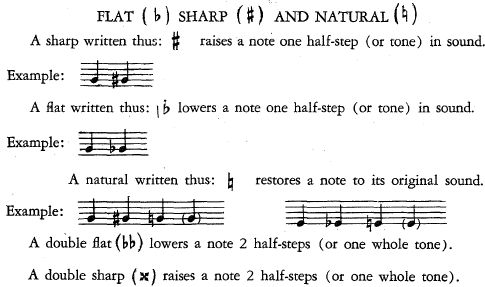The Modern Ukulele Method Online Instructor for Beginners and Advanced Students Page: 107
An Illustrated Uke tutorial with Songs, Sheet Music & Chords by May Singhi Breen
(the original Ukulele Lady).
| Share page | Visit Us On FB |
|
ACCIDENTALS
|
||
 |
||
|
SCALES
A Scale consists of eight (8) tones in alphabetical order, beginning and
ending with the same letter. Example: a, b, c, d, e, f, g, a. These tones are called "scale degrees" and are numbered 1, 2, 3,4, 5, 6, 7, 8.
They are also defined as a succession of tones belonging to a specific key. SCALES may be either Diatonic or Chromatic.
DIATONIC SCALES may be either Major or Minor. The Major and Minor
Scales alternate between half and whole steps according to their individual characteristics. A MAJOR Scale is a series of whole steps and half steps. The half steps
fall between the 3rd and 4th notes and the 7th and 8th notes, either ascending or descending. All other notes in the Major Scale have whole steps between them. MINOR SCALES: There are two forms of the Minor Scale in common use,
"Harmonic" and "Melodic" Minor. In the HARMONIC Minor, the half steps fall between the second and
third, fifth and sixth, and, seventh and eighth degrees, both in ascending and descending. In the MELODIC Minor, the half steps fall between the second and third,
and seventh and eighth degrees ascending; and, between the sixth and fifth, and third and second descending. CHROMATIC SCALE. A Chromatic Scale is made up entirely of half
steps (or semi-tones). (Since we learn later that the Scale of D is the principal scale on the Ukulele, turn to Page 12 Diagram of Uke Fingerboard.) |
||